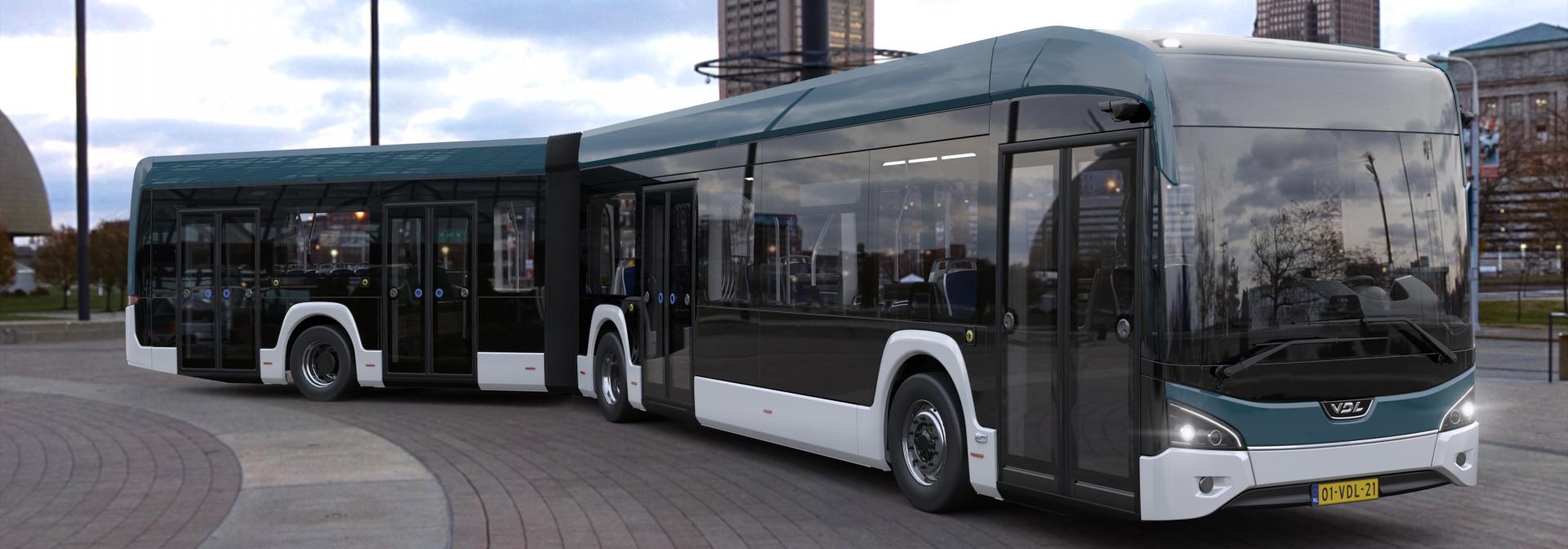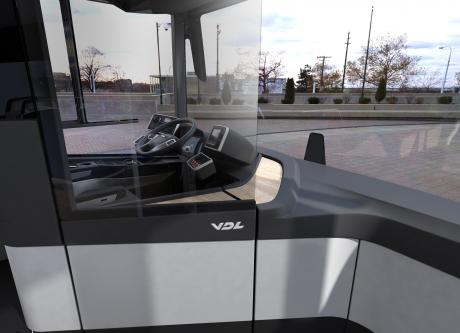
New generation of VDL Citeas: developed from scratch into an innovative product range
Batteries in the floor, a one-piece composite side wall, clever energy management, a sophisticated climate control system and an ergonomic driver's environment. With these five important innovations, VDL Bus & Coach introduces the new generation of Citeas product range, consisting of four length variants and five types.
"The development of the new generation Citeas gave us the opportunity to integrate the latest high-tech technologies in the most efficient way possible," explains Alex de Jong, Business Manager Public Transport of VDL Bus & Coach. "We started completely from scratch, focusing on zero emissions. We took the ideal layout of the vehicle as a starting point. An optimal seat layout and passenger flow, combined with optimal weight distribution, were essential to the development. We also decided at that stage to integrate the standard batteries into the floor. The objective of this is to reduce the centre of gravity and optimise the weight distribution and allocation of all necessary components."
Zero emissions: next level
The new Citea generation is based entirely on an electric drive train. When developing such an e-vehicle, you are no longer tied to certain fixed locations of components that you had to take into account before, such as the position of the combustion engine. De Jong: "For us, it was clear that the next step of a zero emission public transport bus needed new technologies and a new way of thinking. The experiences in both the bus sector and in e-mobility are combined. The customer is offered an optimal platform, while negative factors such as limited range, fewer passengers and a higher total cost of ownership of ZE vehicles are eliminated.”
Over 100 million e-miles of experience
During the development of the new generation of Citeas, a great deal of data provided many factual insights, all based on more than 100 million electric kilometres driven. Since 2015, VDL Bus & Coach has also been conducting market research in order to gain a better understanding of the future of mobility, which also includes interviewing key European stakeholders.
"Our customers will be excited by the fact that the range per day is no longer limited, that the number of passengers is even higher than the standard for diesel buses and that the TCO for most operations is lower than that for diesel buses. In addition, we have done everything possible to enthuse the driver about the ergonomic driver's cabin and the safety-enhancing systems. Passengers will experience levels of comfort and an ambience that are very balanced, as the interior design is based on modern public spaces and mobility systems. In this way, the innovative design also contributes to the greater goal of a liveable city, where residents will benefit from clean air and reduced noise."
Range of up to 600 kilometres
The new Citeas will be built in four length variants: 12.2 metres (Low Floor and Low Entry), 13.5 metres (LE), 14.9 metres (LE) and 18.1 metres (LF). The 13.5-metre version has two axles, which can compete with a three-axle unit in terms of seating capacity. The range of the new generation of Citeas has improved significantly: all vehicles can cover a distance of 500 to 600 kilometres during their entire period of use. A battery capacity of 490 kWh is possible on a 12.2-metre VDL Citea.
VDL Bus & Coach is thus responding to the standards demanded in city and regional transport today: in metropolitan areas, the Citeas are capable of 24-hour operation, and on regional lines, which are increasingly being electrified, routes of up to 100 kilometres and daily services of 600 kilometres are no longer an exception.
Batteries in the floor
The standard battery pack of the new Citea generation is integrated into the floor. The absence of batteries in the passenger compartment ensures optimal passenger flow and maximises the number of seats. By placing the batteries in the floor, the centre of gravity of the bus is lower, which makes road handling more stable. Ride comfort for the driver and passengers has also been significantly improved. This also reduces the weight of the vehicle.
Composite sidewall
A new feature is the side wall, which is built in one piece and developed by VDL itself. This composite sidewall brings about a considerable weight reduction. This causes less vibration and filters the sound coming from outside. In addition, it leads to less energy consumption. The innovative composite side panel construction is 15% lighter than a conventional side panel. Furthermore, the introduction of this composite sidewall has both greatly improved the insulation of the bus and significantly reduced the consumption of the climate control system. There are also no more cold bridges in the side wall. This leads to more comfort for the passengers.
Climate control system
Because there is no such thing as an ideal temperature for all passengers, the new Citea has different climate zones, which contribute to reduced energy consumption while optimising comfort. The driver can create his or her own thermal zone by means of an additional cab heater, which supplies warm air around the legs and torso. This allows the driver to set his or her own comfortable temperature from 17 to 27 degrees. In order to be able to set different climate zones in the new generation of Citeas, VDL Bus & Coach has developed its own heat pump system. This ensures the right temperature at the various locations in the vehicle. 60% of the heat comes from the floor.
Energy management
The use of double-glazing, which is standard in the new Citea, has reduced energy consumption by 10%. This greatly improves insulation performance, so that less cold is radiated from the inside of the windows, noise from outside is damped and less condensation occurs. This results in considerably more comfort for the passenger. Overall energy consumption has fallen by around 25%. In addition to double glazing, this is achieved through smart software, the driveline, climate control system, aerodynamics and weight reduction, among other things.
Ergonomic driver environment
In the new generation of Citeas, not only has the driver's seating position been greatly improved, but so has the steering column with a larger adjustment range and lower steering forces for optimal comfort, based on the modern technology used in the automotive industry. For the driver, there are flexible and extensive adjustment possibilities and sufficient storage space. Choosing the desired pedal arrangement is also a novelty. Research results show that a lot of time and energy has been spent improving vehicle-driver interaction and safety systems. Future developments in payment systems and autonomous driving were also anticipated.

